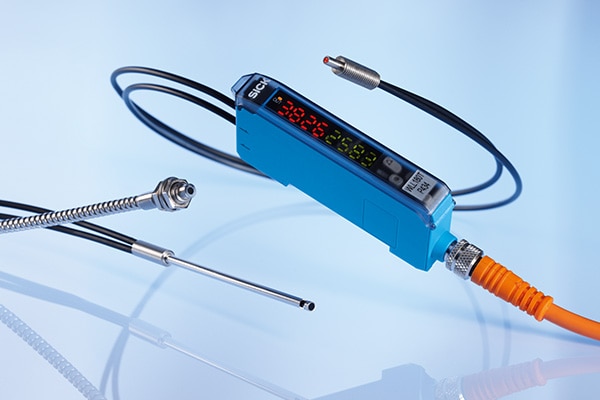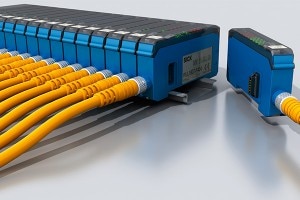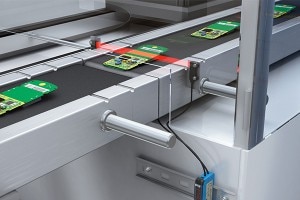Confined spaces, tiny objects, and tailored component designs - these are some of the challenges faced when producing electronic components and devices. Intelligent solutions from SICK are exactly the right combination of fiber-optic sensors and fibers - for flexible and reliable object detection that can cope with the smallest nook and cranny.  To keep pace with the flexibility demands of the electronics industry, sensor technology has to be adaptable. What is required - in terms of integration, adjustment, and logical adaptation - is adapted intelligence, which must be geared toward and tailored to the relevant application and task.
To keep pace with the flexibility demands of the electronics industry, sensor technology has to be adaptable. What is required - in terms of integration, adjustment, and logical adaptation - is adapted intelligence, which must be geared toward and tailored to the relevant application and task.
The journey itself is the destination
The search for an application-specific sensor solution starts with the selection of a suitable fiber and its specific design: plastic or glass fiber, the shape and size of the end sleeve, the protective sheath material, and optical heads that are tiny but still have a wide detection angle. Optical fibers from SICK will fit seamlessly into virtually any application context. 
Getting to the heart of detection
The fiber-optic sensors from the WLL180T product family take this solution to the next level - by adapting it to the detection task concerned. The extremely small light spot is the ideal starting point for precise object and feature detection in automation. Consequently, reliable presence monitoring is no trouble at all, even with tiny objects in the micrometer range. Up to 16 sensors can be synchronized in bus mode.
Up to 16 sensors can be synchronized in bus mode.
Thanks to the wide range of fibers for different applications, the WLL180T sensors can also be used in confined installation spaces. For example, they can be used to inspect the smallest pins in integrated circuits. The sensors are capable of detecting the tiniest changes in an objects dimensions even from a greater distance - and even in areas of machines and plants that are difficult to access. Up to 16 sensors can be synchronized in bus mode. This prevents mutual interference when fiber-optic heads are mounted very close to one another (anti-interference). In addition, the bus technology makes for easy handling and reduces wiring overheads. This also speeds up commissioning: Thanks to the bus link, all the settings for a sensor can be copied to other sensors within the bus network using a single teach-in cable.
Rapid switching is the priority
Within the electronics industry, high-tech process automation and object monitoring go hand in hand with reliable and stable sensors for the benefit of the application. For example, wire-break monitoring in the context of wire bonding calls for pinpoint accuracy when detecting fast-moving objects. WLL180T fiber-optic sensors meet this challenge by providing high-resolution signal processing and extremely short response times for lightning- fast processes. LL3-DT01 optical fibers are able to compensate for minor vibrations in the bonding wire thanks to their large detection angle.
Everywhere and nowhere
 Many applications within the electronics industry involve detecting what is there - and also what is not. PCBs often have recesses, quite large drilled holes, or curves, which means that the object detection system has to cope with the challenge of a blueprint. Also with regard to this, WLLT180T fiber-optic sensors score with the proven combination of performance and setting options of the fiber-optic amplifiers together with the specific optical properties of the selected optical fiber.
Many applications within the electronics industry involve detecting what is there - and also what is not. PCBs often have recesses, quite large drilled holes, or curves, which means that the object detection system has to cope with the challenge of a blueprint. Also with regard to this, WLLT180T fiber-optic sensors score with the proven combination of performance and setting options of the fiber-optic amplifiers together with the specific optical properties of the selected optical fiber.
- Product information: LL3 optical fibers, WWL180T fiber-optic sensors
- Product portfolio: photoelectric sensors

